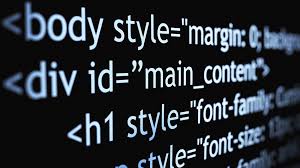The A-Z of EdTech Literacy: Letters G-M

Click here to access all of the articles in this series.
In this series, we are discussing all of the terms, concepts, and technologies that you need to know to be literate in all thinks edtech. In the previous article, I introduced letters C-F and in this one, I will discuss letters G-M.
Gamification. Gamification refers to the process of bringing in aspects of video games and using them to increase the intrinsic motivation behind completing certain tasks. Often, these systems include aspects like the ability to earn points, reaching new levels, and even advancing on a leaderboard.
Hardware. refers to the physical elements of a computer system (mechanical, electrical, and magnetic).
Holography. Holography was just science fiction a few years ago, but it’s now becoming a reality in some fields, such as medicine. This imaging technique, which allows one to see a 3-D view of an image, has yet to become a part of everyday classroom activities. Holography introduced in classroom activities would change entirely how some subjects are taught. Biology, physics, astronomy, and chemistry could be taught on an entirely different level.
Internet. refers to a global system of interconnected computer networks to serve billions of users worldwide, which are linked by electronic networking technologies.
LAMP. Language Acquisition through Moor Planning, or LAMP, connects neurological and motor learning in a way that makes communication easier for students with autism and related disorders. These principles have proven especially helpful for students who do not speak or have very limited verbal skills. Paired with technology, LAMP principles empower a growing student population with autism to effectively communicate and reach higher academic achievements. LAMP is present in technology – from specially made computers to learning apps.
Learning analytics. This evolving concept in K-12 classrooms is different from educational data mining in that it focuses on individual students, teachers, and schools without direct implications to the government. Learning analytics is the education industry’s response to “big data” that is used in the business world for improvements and redirection of focus. Learning analytics essentially show students what they have achieved and how those goals match up with their peers. If implemented correctly, this technology has the potential to warn teachers early of academic issues while keeping students more accountable. Using the mobile and online technology already in place, students can better track and tailor their academic experiences.
Lecture capture. Lecture capture is typically used in colleges and universities. It gives professors a way of not only recording lectures (the original intent was as a backup to class lectures), but it lets the lecturer interact and supplement the information they teach in class. For example, a professor makes the lecture available. Students can then go back and post comments at any point during the recording and receive responses almost immediately from other people in the class, as well as from the professor.
Makerspaces. Are creative spaces located in communities, schools, and public and academic libraries. These areas are designed to engage participants in hands-on activities that teach twenty-first-century skills. The emphasis in makerspaces is placed upon educating students in STEAM (science, technology, engineering, and mathematics) subjects as well as digital and information literacy.
Mobile learning. Tablets and smartphones in the classroom are no longer a matter of “if,” but “when, and how quickly?” Administrators and educators can tap into the convenience of mobile technology in the classroom and the potential for student learning adaptation. Over half of school administrators say there is some form of mobile technology in their classrooms and that they plan to implement more when it is financially feasible. School districts should keep in mind that the purchase of mobile devices for K-12 use is only one piece of the learning puzzle. There must be funding for teacher training and maintenance of the devices too.
Well, that’s it for G-M. Did we miss any?






